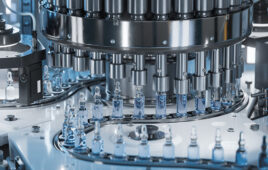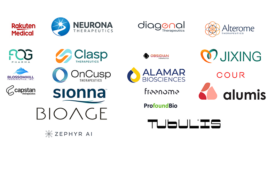
[Pixel Matrix/Adobe Stock]
The situation is beginning to shift considerably with the COVID-19 pandemic, in particular, acting as a catalyst, compelling many Big Pharma companies to accelerate their digital initiatives. Pfizer, Sanofi, Novartis, AstraZeneca, and other Big Pharma companies have unveiled ambitious initiatives tapping cloud computing and AI technologies, aiming to streamline various aspects of drug discovery and development.
Inside the Accenture-AWS-Merck pharma alliance
For instance, Merck in 2021 forged an alliance with Accenture and AWS to update its IT infrastructure and facilitate advanced drug discovery and development processes. Recently, the three organizations announced an expanded partnership that will migrate a substantial portion of Merck’s IT infrastructure to AWS as part of a multiyear initiative. The project aims to bolster Merck’s scientific research and discovery processes by transitioning core applications like SAP, machine learning, and data warehouses to AWS. (AWS also recently revealed an expanded collaboration with Amgen as well.)
Merck has tapped AWS and Accenture’s expertise in a variety of dimensions. For instance, Merck used Amazon SageMaker, a managed service to build, train, and deploy machine learning models, to develop an inference pipeline for a manufacturing platform known as HawkAVI. This platform helps identify complex defects in medicines. In addition, through high performance computing on AWS and AWS HealthOmics, Merck is scaling its protein model prediction and omics analytical capabilities.
The collaboration between Merck, AWS, and Accenture signifies more than just the adoption of new technologies. It represents a fundamental shift in the approach to IT infrastructure and drug discovery and development.
Accenture’s strategic approach to cloud transformation

Jason Anderson
Jason Anderson, a senior managing director with Accenture’s Life Sciences industry practice, explains Accenture’s role in the partnership, saying, “We take a value-led approach to cloud transformation. This means starting with a clear definition of the value levers we will impact and working as closely with client finance leadership as we do with IT and business leadership.”
At the heart of the partnership is a comprehensive revamp of Merck’s digital and IT infrastructure. “It’s not about moving legacy workloads to the cloud but instead about modern ways of working, creating modern architectures, automating core processes, modernizing solutions, and rationalizing the IT landscape to create a more cost-effective and agile digital core,” he said.
Anderson also highlighted the importance of “meeting clients where they are on their cloud business transformation agendas to balance IT and business benefits.” This balancing act is critical as companies like Merck aim to tap cloud and AI technologies to drive innovation while ensuring continuity with existing systems.
On AI and the quest for the ‘Holy Grail’ of pharma R&D
On the drug discovery side, Anderson noted that “AI represents a massive opportunity to accelerate innovative therapies for patients.”
When asked about the potential of AI to drive significant gains in drug discovery and development, a sort of ‘Holy Grail’ for the sector, Anderson highlighted the “AI in drug discovery and development represents a massive opportunity to accelerate innovative therapies for patients, no doubt. Even as we strive to realize this ‘Holy Grail’ use case, we see significant opportunities to simplify, automate, and streamline time-consuming activities that elongate the drug development cycle.”
By simplifying and automating the historically labor-intensive and time-consuming processes, these technologies can significantly reduce the overall duration of a range of R&D activities. “From automating the provision of scientific systems to leveraging cloud-native services and data sets for analysis to real-time patient monitoring, there are significant opportunities to reduce manual activities through cloud transformation, which in turn can translate into material R&D cycle time reduction,” Anderson concluded.
Filed Under: Data science, Drug Discovery and Development, machine learning and AI



